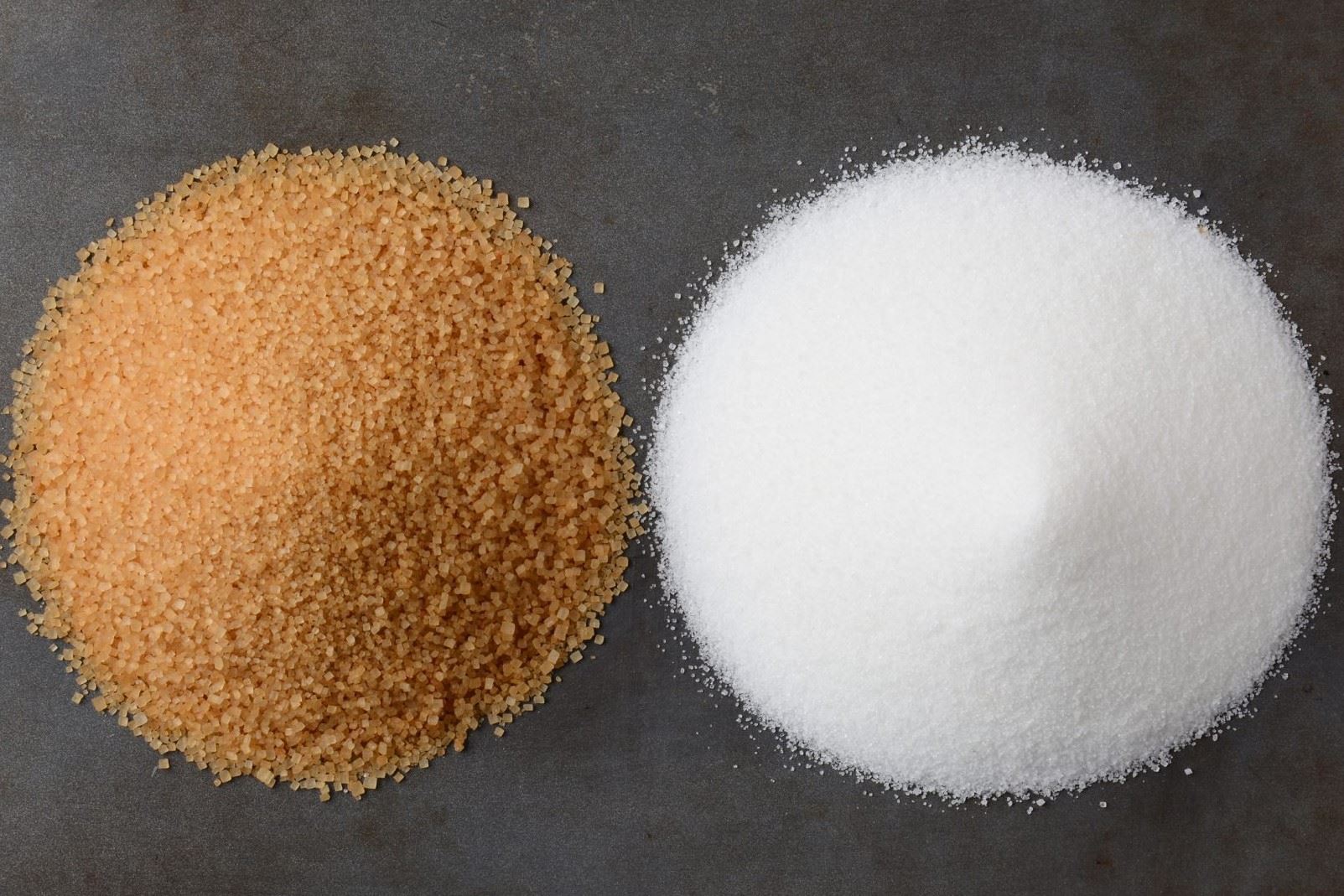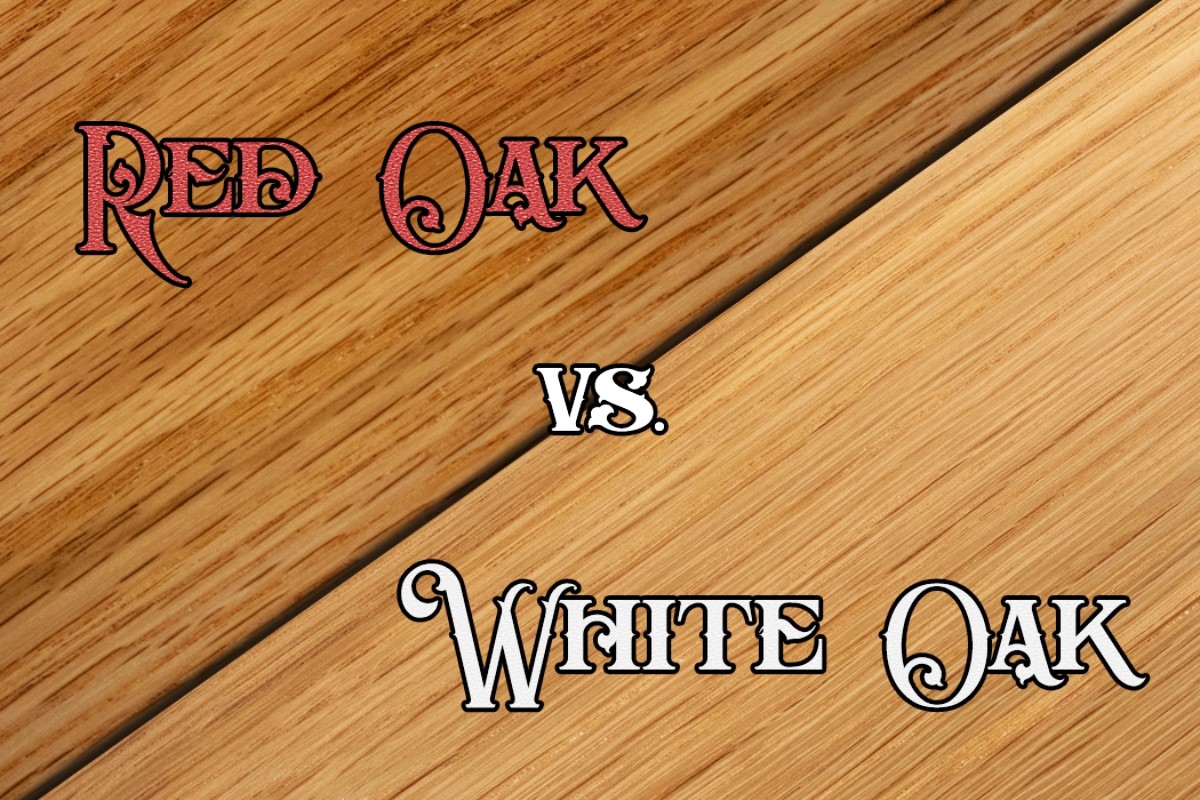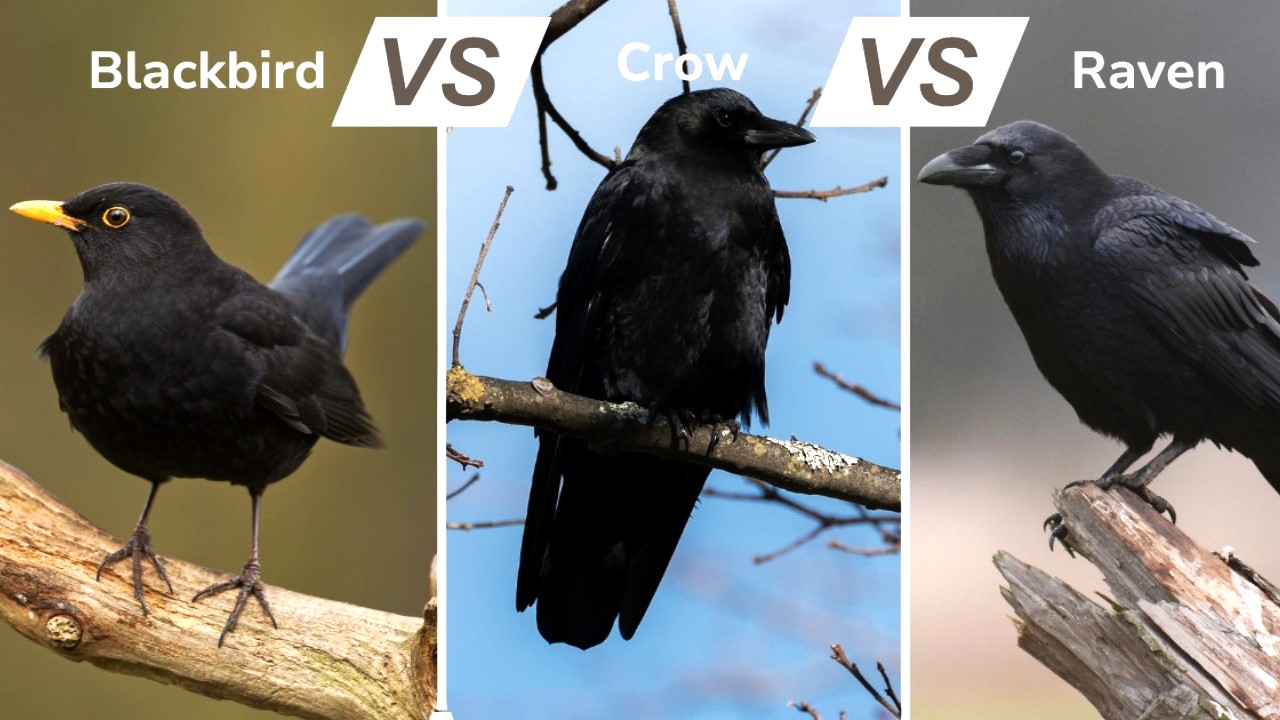Home>Food and Cooking>Unveiling The Surprising Distinctions Between Turbinado Sugar And White Table Sugar


Food and Cooking
Unveiling The Surprising Distinctions Between Turbinado Sugar And White Table Sugar
Published: February 11, 2024
Discover the key differences between turbinado sugar and white table sugar in this comprehensive guide. Learn how to use them in your food and cooking endeavors.
(Many of the links in this article redirect to a specific reviewed product. Your purchase of these products through affiliate links helps to generate commission for Noodls.com, at no extra cost. Learn more)
Table of Contents
Introduction
When it comes to sweetening your favorite dishes or beverages, the type of sugar you choose can significantly impact the flavor, texture, and overall culinary experience. In the realm of sweeteners, two popular options that often spark curiosity and debate are turbinado sugar and white table sugar. While both are used to add sweetness to a wide array of recipes, they possess distinct characteristics that set them apart from each other.
In this comprehensive exploration, we will delve into the surprising distinctions between turbinado sugar and white table sugar. From their unique production processes to their nutritional profiles and culinary applications, we will uncover the nuances that make these sugars stand out in the world of sweet delights. So, let's embark on this flavorful journey to unravel the intriguing differences between these two sweeteners and gain a deeper understanding of how they can elevate our culinary creations.
What is Turbinado Sugar?
Turbinado sugar, often referred to as "raw sugar," is a type of minimally processed cane sugar known for its distinctive golden hue and subtle molasses flavor. This natural sweetener undergoes a less refined production process compared to white table sugar, which contributes to its unique characteristics.
The production of turbinado sugar begins with the extraction of sugarcane juice, which is then heated to form a thick syrup. Next, the syrup undergoes a crystallization process, during which the molasses content is retained, giving the sugar its signature color and flavor. Unlike white table sugar, turbinado sugar is not subjected to the same level of refining and does not undergo the process of removing the molasses coating, resulting in its natural caramel-like taste and light brown color.
One of the distinguishing features of turbinado sugar is its coarse texture, attributed to the larger crystals that are characteristic of this type of sugar. These crystals not only contribute to the unique appearance of turbinado sugar but also impact its performance in various culinary applications.
In addition to its distinct flavor and texture, turbinado sugar is often favored for its perceived natural and less processed qualities. While it is not devoid of calories and should be consumed in moderation, some individuals opt for turbinado sugar as a more natural alternative to highly refined sweeteners.
Overall, turbinado sugar stands out for its subtle molasses flavor, golden color, and less refined nature, making it a compelling option for those seeking a distinctive sweetener to enhance their culinary creations.
What is White Table Sugar?
White table sugar, also known as granulated sugar or refined sugar, is a ubiquitous sweetener that is widely used in culinary applications and food production. It is derived from either sugarcane or sugar beets through a multi-step refining process that results in the production of fine, granulated crystals with a pure white color.
The production of white table sugar begins with the extraction of juice from sugarcane or sugar beets, which is then subjected to processes such as clarification, evaporation, and crystallization to separate the sucrose from the impurities. The resulting syrup undergoes further purification to remove any remaining non-sugar components, resulting in the formation of fine sugar crystals. These crystals are then dried and sieved to produce the familiar granulated texture of white table sugar.
One of the defining characteristics of white table sugar is its pure, neutral flavor profile, devoid of any molasses or natural impurities. This makes it a versatile sweetener that can seamlessly integrate into a wide range of recipes without imparting additional flavors. The fine texture of white table sugar also allows for easy dissolving, making it ideal for sweetening beverages, baking, and cooking.
In the realm of nutrition, white table sugar is composed almost entirely of sucrose, a simple carbohydrate that provides a quick source of energy. However, it is devoid of essential nutrients, and its consumption should be moderated as part of a balanced diet. Due to its high level of refinement, white table sugar is often criticized for its perceived lack of nutritional value and potential negative impact on health when consumed in excess.
Despite these concerns, white table sugar remains a staple in the culinary world, valued for its ability to enhance flavors, contribute to desirable textures, and act as a preservative in various food products. Its widespread availability and affordability make it a go-to sweetener for both home cooks and food manufacturers, playing a pivotal role in the creation of countless delectable treats and culinary delights.
In summary, white table sugar is a refined sweetener with a pure, neutral flavor and fine texture, making it a versatile ingredient in a wide array of culinary applications. Its production process and nutritional composition distinguish it from other sweeteners, shaping its role in the realm of food and cooking.
Nutritional Differences
When comparing the nutritional profiles of turbinado sugar and white table sugar, several key distinctions come to light. While both sweeteners primarily consist of sucrose, their production processes and levels of refinement result in varying nutrient compositions and potential health implications.
Turbinado sugar, often touted for its less refined nature, retains a small amount of molasses during its production, contributing to its light brown color and subtle molasses flavor. This minimal processing allows turbinado sugar to retain some of the natural minerals present in sugarcane juice, including small amounts of calcium, potassium, iron, and other trace minerals. While these mineral content levels are not significant enough to provide substantial nutritional benefits, they do set turbinado sugar apart from its more refined counterparts.
On the other hand, white table sugar undergoes extensive refining processes, resulting in the removal of molasses, natural impurities, and any residual nutrients. As a result, white table sugar is almost entirely composed of sucrose, devoid of any significant vitamins, minerals, or other essential nutrients. This high level of refinement gives white table sugar its pure white color and neutral flavor, making it a versatile sweetener in various culinary applications.
From a caloric perspective, both turbinado sugar and white table sugar provide approximately 16 calories per teaspoon, making them comparable in terms of energy content. However, it is important to note that both sugars are considered sources of empty calories, offering little to no nutritional value beyond their sweetening properties.
In terms of potential health considerations, the less refined nature of turbinado sugar may appeal to individuals seeking a sweetener with a perceived lower level of processing. While the mineral content in turbinado sugar is minimal, some proponents argue that these trace elements offer a slight nutritional advantage over highly refined sugars.
It is essential to approach the consumption of both turbinado sugar and white table sugar with moderation, as excessive intake of added sugars has been linked to various health concerns, including obesity, dental issues, and metabolic imbalances. Regardless of their nutritional variances, both sugars should be enjoyed as part of a balanced diet, with a focus on mindful consumption and an emphasis on whole, nutrient-dense foods.
In summary, while turbinado sugar retains trace minerals due to its minimal processing, white table sugar, with its high level of refinement, lacks significant nutrients beyond sucrose. Both sugars contribute to empty calorie intake and should be consumed in moderation as part of a well-rounded dietary approach.
Flavor and Texture Differences
The flavor and texture differences between turbinado sugar and white table sugar are striking and play a pivotal role in shaping the sensory experience of various culinary creations.
Turbinado sugar, with its natural caramel-like taste and subtle molasses undertones, offers a unique flavor profile that sets it apart from the pure sweetness of white table sugar. The presence of molasses, retained during the minimal processing of turbinado sugar, imparts a delicate richness and depth to its flavor, adding a nuanced sweetness that enhances the overall taste of dishes and beverages. This gentle hint of molasses can elevate the flavor of baked goods, such as cookies and muffins, and add a delightful complexity to beverages like coffee and tea.
In contrast, white table sugar boasts a pure, neutral flavor that seamlessly integrates into a wide array of recipes without imposing any additional taste characteristics. Its fine granulated texture allows for uniform dissolving, making it an ideal choice for applications where a smooth, consistent sweetness is desired. The absence of molasses in white table sugar results in a clean, straightforward sweetness that complements the flavors of other ingredients without overshadowing them. This makes white table sugar a versatile sweetener for a diverse range of culinary creations, from delicate pastries to savory sauces.
When it comes to texture, turbinado sugar's coarse crystals contribute to its distinctive appearance and mouthfeel. These larger grains add a subtle crunch and a satisfying textural element to baked goods and desserts, making them visually appealing and providing a delightful contrast to softer components. The coarser texture of turbinado sugar also lends itself well to creating textured toppings for crumbles, streusels, and caramelized coatings, adding depth and visual interest to a variety of sweet treats.
On the other hand, the fine, uniform texture of white table sugar allows it to seamlessly dissolve and integrate into batters, doughs, and liquids, resulting in a smooth, homogeneous consistency in the final product. This fine texture makes white table sugar an excellent choice for applications where a consistent sweetness and texture are desired, such as in custards, syrups, and frostings.
In summary, the flavor and texture differences between turbinado sugar and white table sugar offer distinct opportunities for culinary exploration and creativity. Whether seeking a subtle molasses note and coarse texture or a neutral sweetness and fine consistency, these sugars provide unique sensory dimensions that can elevate the enjoyment of a wide range of culinary delights.
Culinary Uses
Turbinado sugar and white table sugar each bring unique qualities to the table, offering diverse culinary applications that cater to different flavor profiles, textures, and visual presentations. Understanding the distinct characteristics of these sugars is essential for leveraging their individual strengths in various recipes and culinary creations.
Turbinado Sugar in Culinary Applications
The subtle molasses flavor and light caramel notes of turbinado sugar make it a standout ingredient in baked goods, such as cookies, muffins, and quick breads. Its coarse texture adds a delightful crunch and visual appeal to toppings for crumbles, streusels, and caramelized coatings, enhancing the overall sensory experience of these treats. Additionally, turbinado sugar can be used to create textured crusts for pies and tarts, adding a rustic charm and depth of flavor to these classic desserts.
In beverage preparations, turbinado sugar's nuanced sweetness and gentle molasses undertones complement the rich flavors of coffee and tea, providing a natural sweetening option that adds depth and complexity to hot or cold drinks. Its golden hue and subtle molasses flavor also make it an ideal sweetener for homemade syrups and cocktail mixers, infusing beverages with a hint of natural sweetness and a touch of character.
White Table Sugar in Culinary Applications
White table sugar's neutral flavor and fine texture make it a versatile sweetener in a wide range of culinary applications. In baking, it serves as a foundational ingredient in cakes, pastries, and delicate desserts, providing consistent sweetness without altering the intended flavor profiles of the final products. Its ability to dissolve uniformly makes it an essential component in custards, meringues, and frostings, contributing to the smooth texture and balanced sweetness of these confections.
Beyond baking, white table sugar plays a crucial role in the creation of syrups, sauces, and preserves, where its ability to dissolve quickly and evenly is essential for achieving the desired consistency and sweetness. It also acts as a key ingredient in the production of jams, jellies, and fruit preserves, where its preserving properties help maintain the color, texture, and shelf life of these homemade delights.
Exploring the Versatility of Sweeteners
While turbinado sugar and white table sugar offer distinct flavor and texture profiles, they can also be used in combination to achieve a balance of sweetness and depth of flavor in various culinary creations. By understanding the unique characteristics of these sugars, culinary enthusiasts and professional chefs can experiment with different ratios and applications to unlock the full potential of these sweeteners in their recipes.
In summary, turbinado sugar and white table sugar each bring their own strengths to the culinary table, offering a spectrum of possibilities for enhancing the flavor, texture, and visual appeal of a wide array of dishes and beverages. By embracing the distinct qualities of these sugars, culinary enthusiasts can elevate their creations and delight the senses of those who savor their delectable offerings.
Conclusion
In the realm of sweeteners, the distinctions between turbinado sugar and white table sugar unveil a rich tapestry of flavors, textures, and culinary possibilities. Turbinado sugar, with its subtle molasses flavor, golden hue, and less refined nature, offers a nuanced sweetness that adds depth and character to baked goods, beverages, and homemade syrups. Its coarse texture and natural caramel-like taste create visual and sensory dimensions that elevate the enjoyment of various culinary creations.
On the other hand, white table sugar, with its pure, neutral flavor and fine texture, serves as a versatile sweetener that seamlessly integrates into a wide range of recipes, from delicate pastries to savory sauces. Its ability to dissolve uniformly and provide consistent sweetness makes it an essential ingredient in the realm of baking, confectionery, and culinary preservation.
While turbinado sugar and white table sugar possess unique qualities that cater to different culinary needs, they also offer opportunities for creative exploration and experimentation. By understanding the distinct characteristics of these sugars, culinary enthusiasts can leverage their individual strengths to enhance the flavor, texture, and visual presentation of their culinary creations.
Whether seeking to infuse a hint of molasses complexity into a batch of cookies using turbinado sugar or achieving a smooth, balanced sweetness in a fruit preserve with white table sugar, these sweeteners provide a spectrum of possibilities for culinary innovation. Furthermore, by exploring the interplay between these sugars and their complementary roles in various recipes, culinary enthusiasts can unlock new dimensions of flavor and texture in their culinary endeavors.
In conclusion, the surprising distinctions between turbinado sugar and white table sugar not only enrich the sensory experience of culinary creations but also inspire a deeper appreciation for the diverse roles that sweeteners play in the art of cooking and baking. By embracing the unique qualities of these sugars, culinary enthusiasts can embark on a flavorful journey that celebrates the nuances of taste, texture, and visual delight in every delectable dish and beverage they create.













